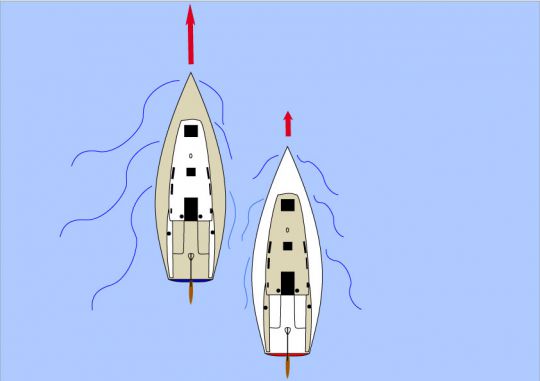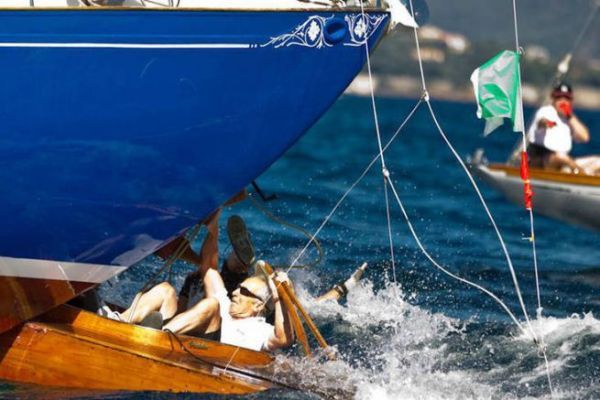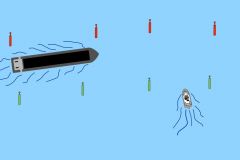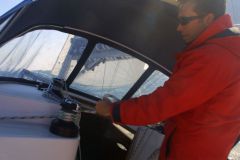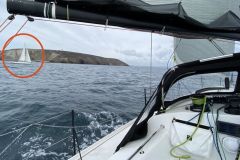During rush hour, on a summer evening, in a busy port, it is likely that you will be dealing with a few daring people who risk too much proximity, you must know how to react to this situation.
Or, when sailing in a squadron with a friendly sailboat, we may approach each other to discuss or exchange some rations or equipment. Once within reach, this sudden overcrowding will be dangerous when it comes out, so a few precautions should be taken.

Priority rules to know
RIPAM establishes the rules of navigation valid worldwide. Our article Understand the helm rules and priorities allows you to better understand these famous rules.

Let us recall the rules that apply in the case of sight boats:
The crossover rule: When two vessels are on opposite courses in such a way that there is a risk of collision, each vessel must come to starboard to pass to port from each other.
The rule of the catch-up boat: Any vessel that overtakes another vessel must deviate from the course of the other vessel
And finally, it should be remembered that the speed is often limited to 3 knots in a port. In addition to avoiding nuisances, this low speed prevents a number of accidents such as the sudden appearance of a boat around a muster.
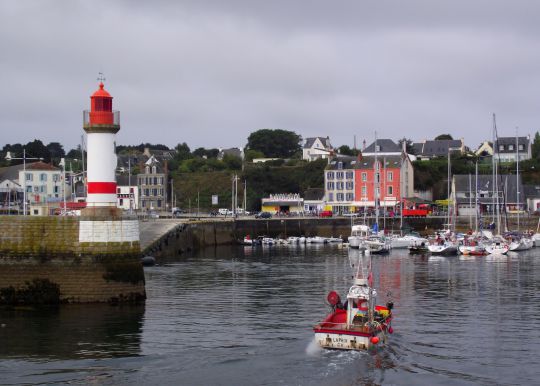
Appropriate behaviour
When ships are in close proximity to each other and to avoid accidents, the crew must be focused on their task. Care must be taken to maintain good visibility. In addition, to avoid being too close to a neighbouring shell plating, you must be ready to manoeuvre the helm or motor immediately.
When you start an avoidance manoeuvre, it must be straightforward to be easily understood by neighbours.
The helmsman must be very careful about the direction of his boat. You will avoid heading changes and unintentional speed variations that can create confusion around you.
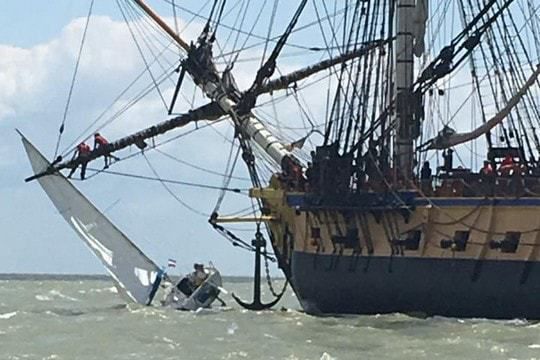
You can't get close to hermione without great vigilance
Be aware of your size and space requirements, pick up fishing rods and barbecue. Think of your forceps, bowsprit, davits and the possible dinghy.
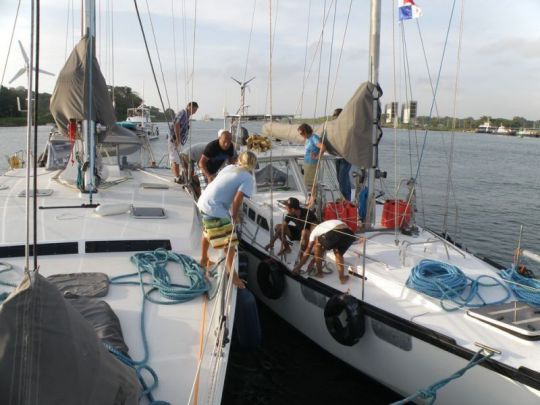
And when a neighbour is too close, don't hesitate to take one or two fenders out of their trunks - they may be indispensable in a few moments.
The environment as a constraint
To avoid risky situations in the presence of another vessel in the immediate vicinity, care must be taken with the direct environment. The wind (its direction and strength) will influence the behaviour of the boats, but let us not forget the current, the water depth and any obstacles.

The environment is also the others or the other one who is too close. To prevent trouble, pay attention to approaching boats, their direction, speed, clutter and attitude (concentrated or in panic).
If the shock is unavoidable, in any case, it is totally forbidden to slip a leg or a foot instead of a beating one. There is no doubt that a boat's gel coat repairs better than a crew member's crushed femur.
How to avoid the shock if two boats are too many proches??
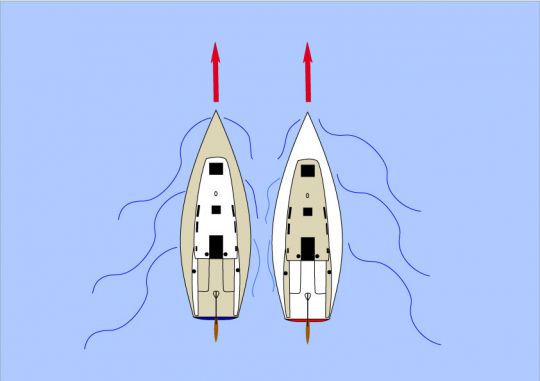
The risk of collision is very common when two boats have close and parallel routes.
This is a typical situation at the entrance of a lock or port when there is too much haste.
If you have not anticipated, there will come a time when you will be too close to your neighbour. This situation is dangerous, as a slight deviation of the bar or a misplaced laughing stock can lead to misconduct. It is then necessary to act.
What to avoid doing
If, the two ships move apart simultaneously, it is the shock assuré?! They will inevitably type their transoms. Indeed in sailing the axis of rotation is more or less in the middle, so when the bows move away from each other the dolphins approach dangerously.
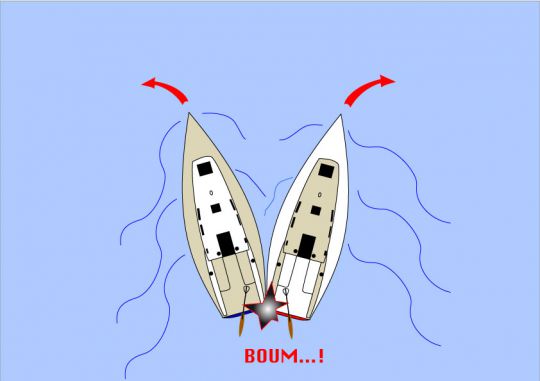
Then there are two possible solutions:
- Only one of the two boats is moving away: the first solution is to decide with your neighbour which one of you will move away. The helmsman will take care not to move away violently, but by small successive strokes.
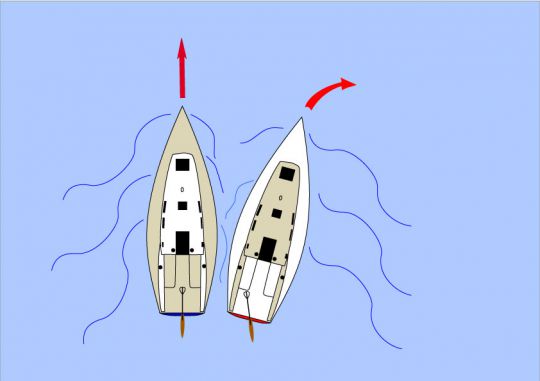
- One of the two boats is clearly reducing its speed: the second solution is to work only on gases. We'll reduce the speed without touching the bar. Here again, for a successful manoeuvre, it is preferable to agree on everyone's role beforehand.
